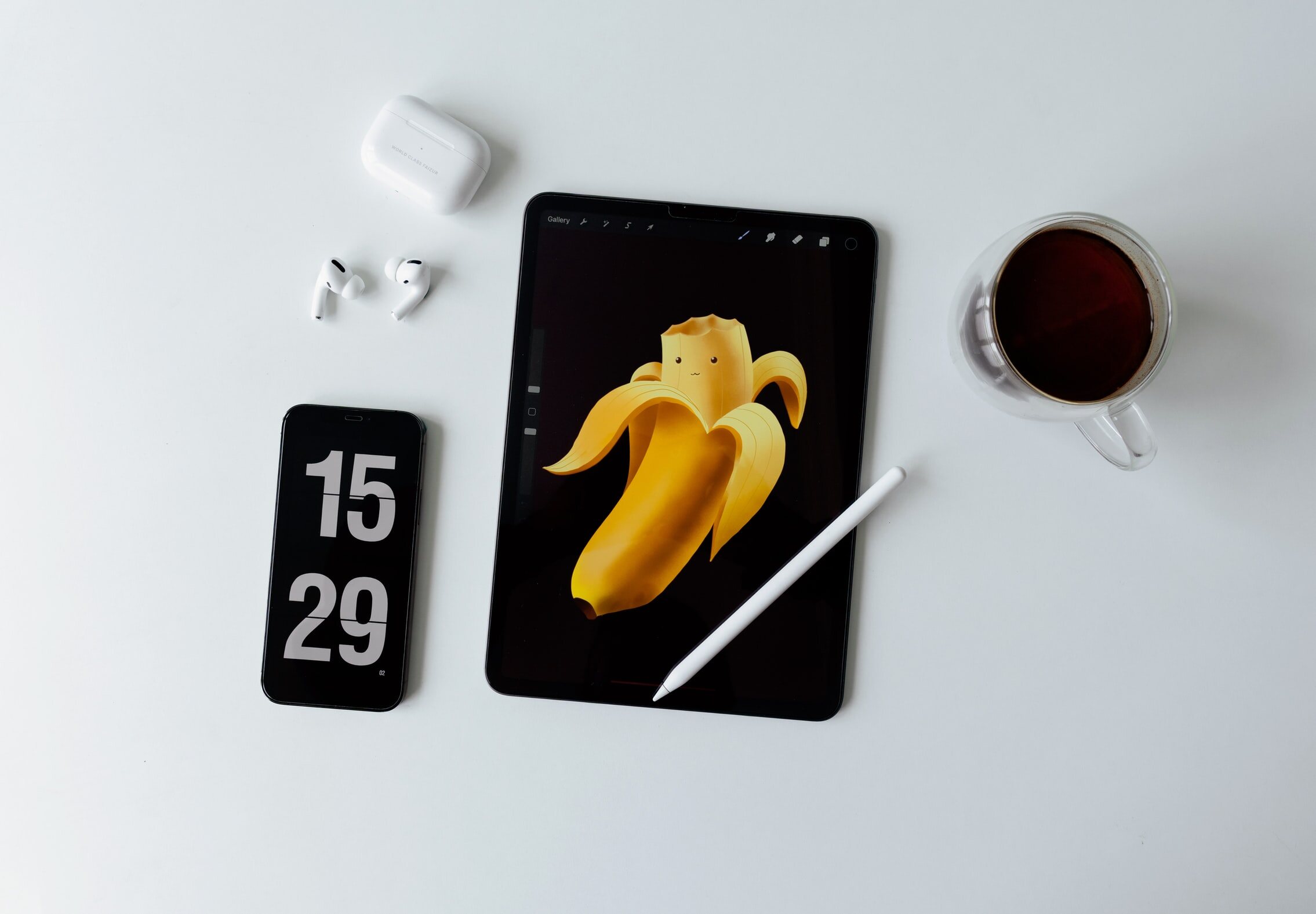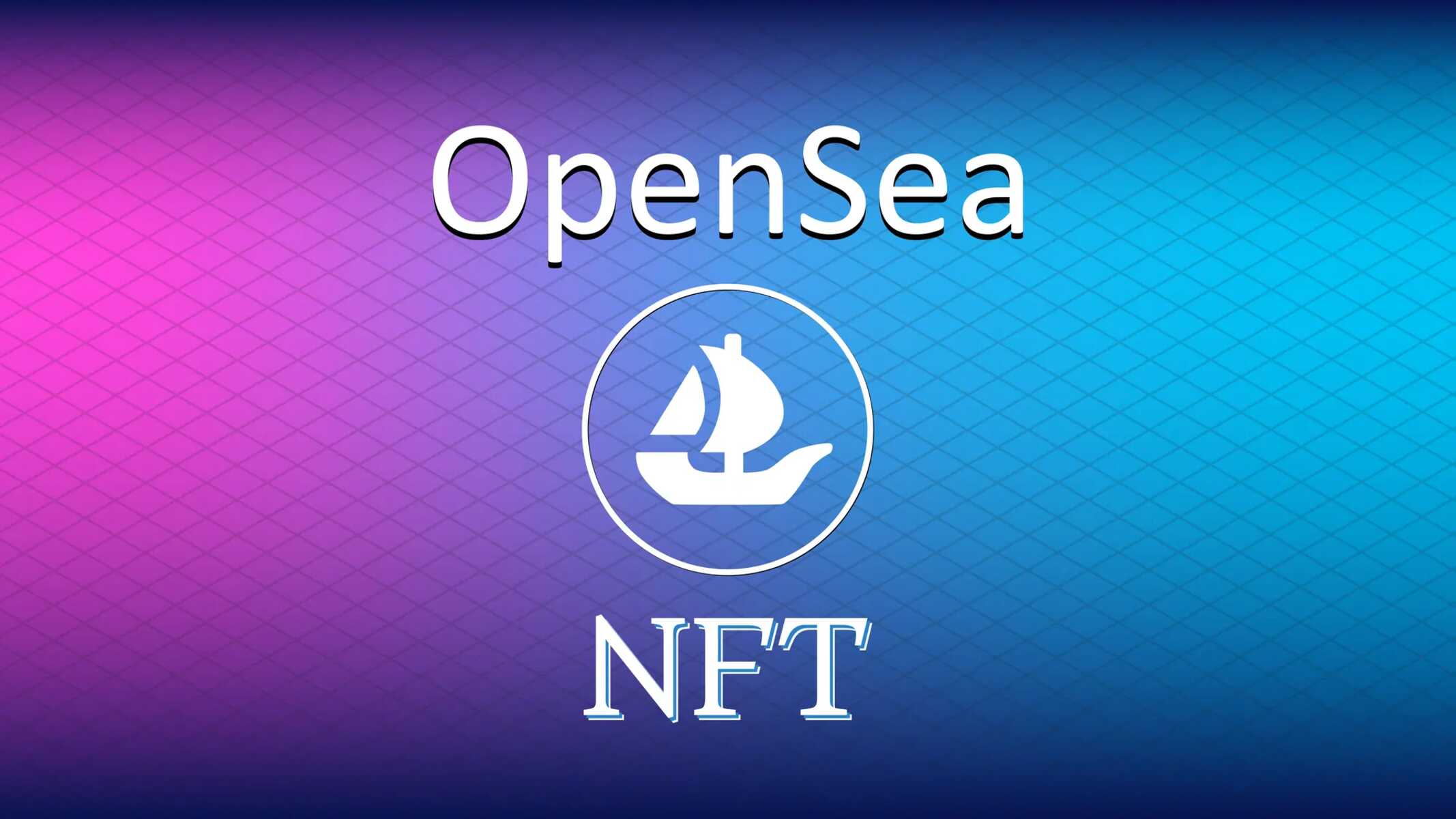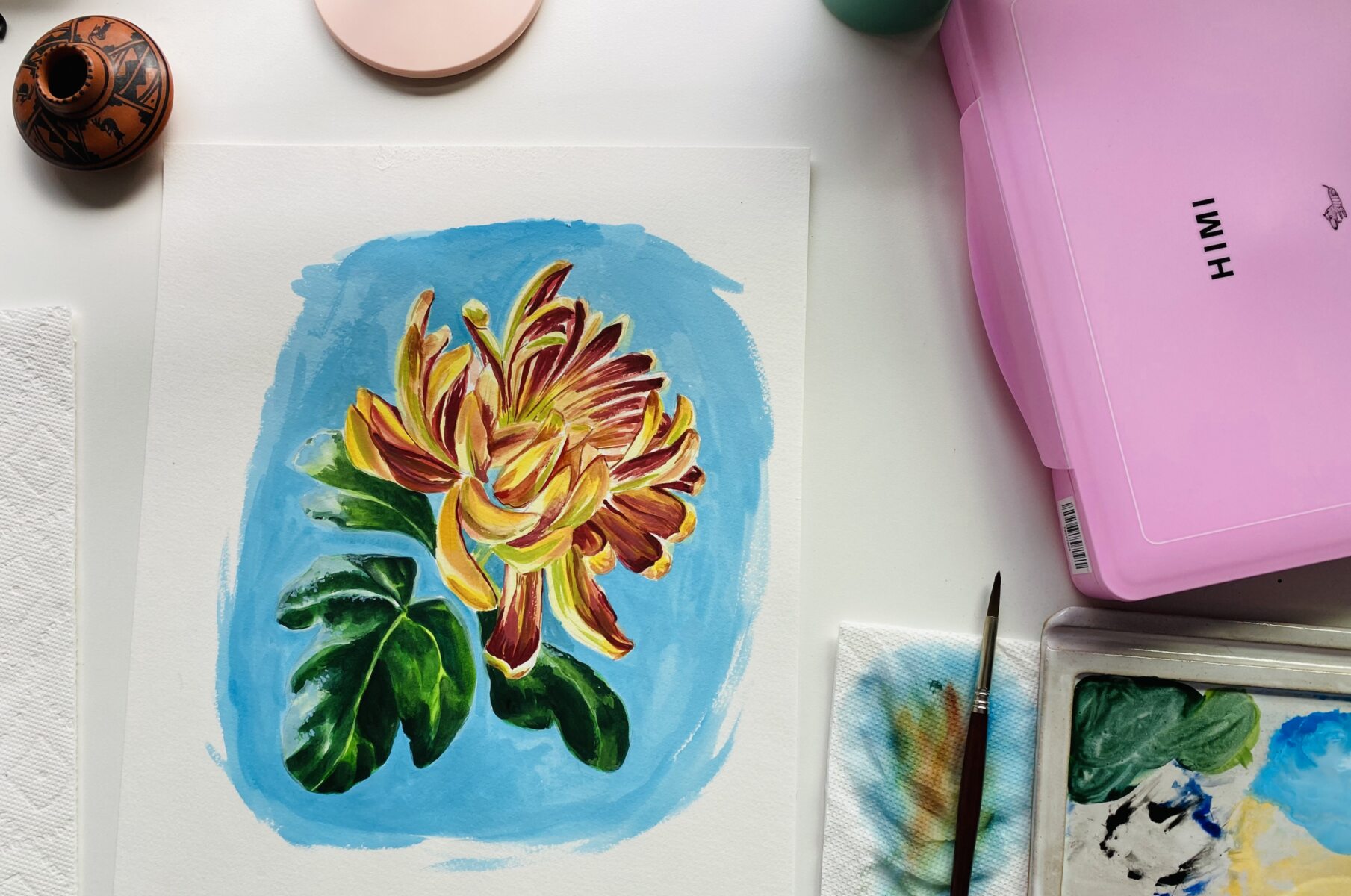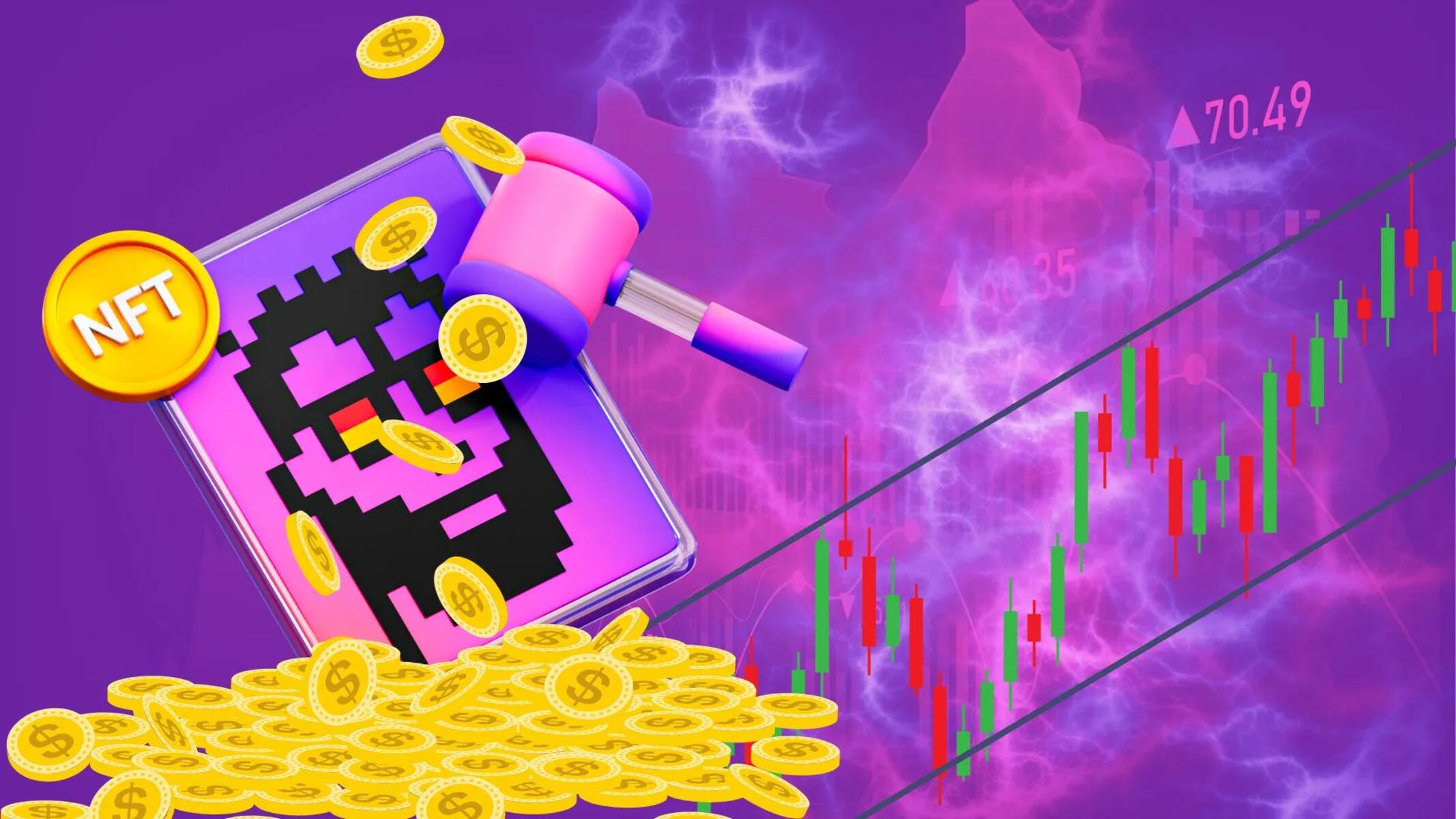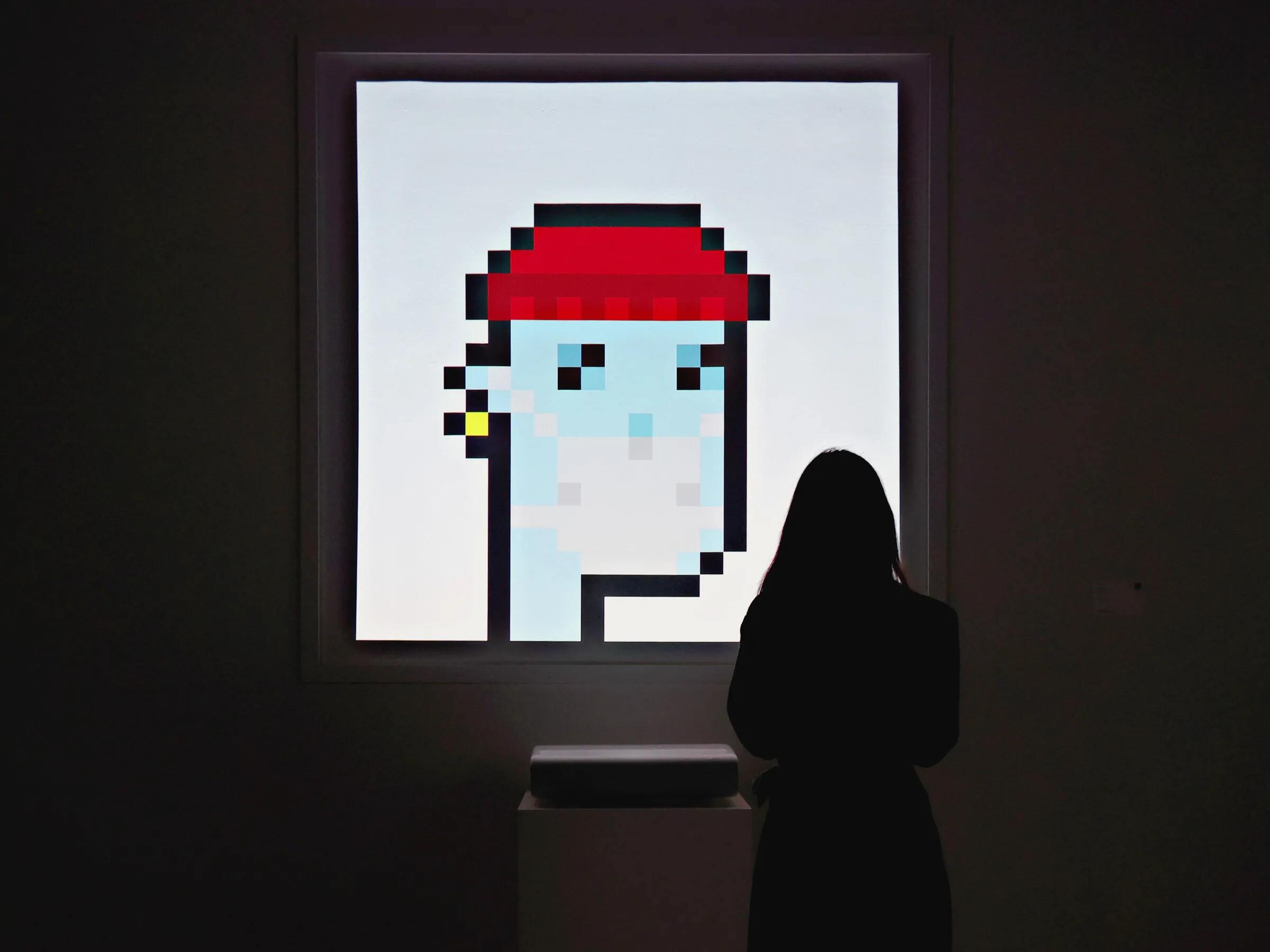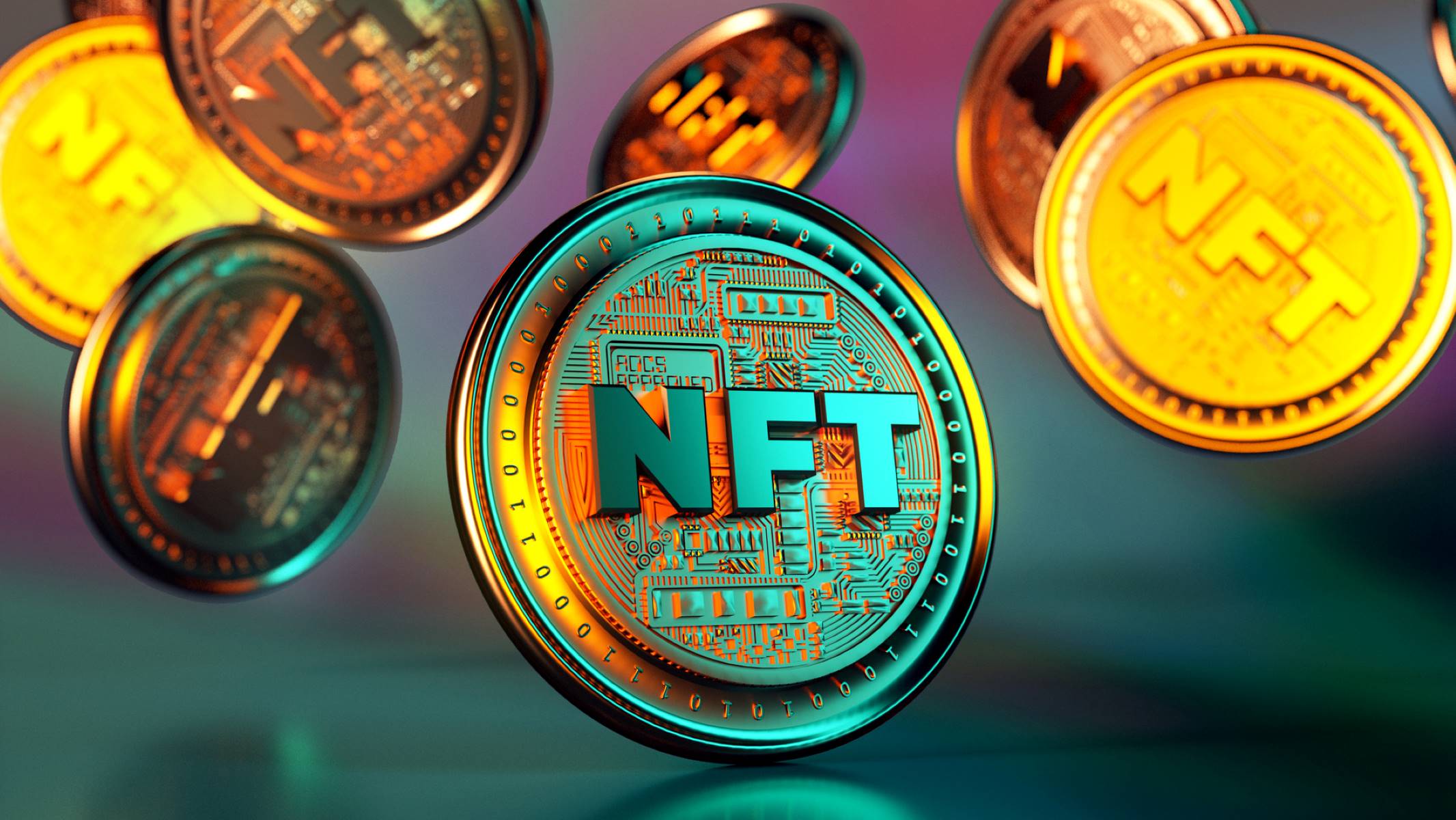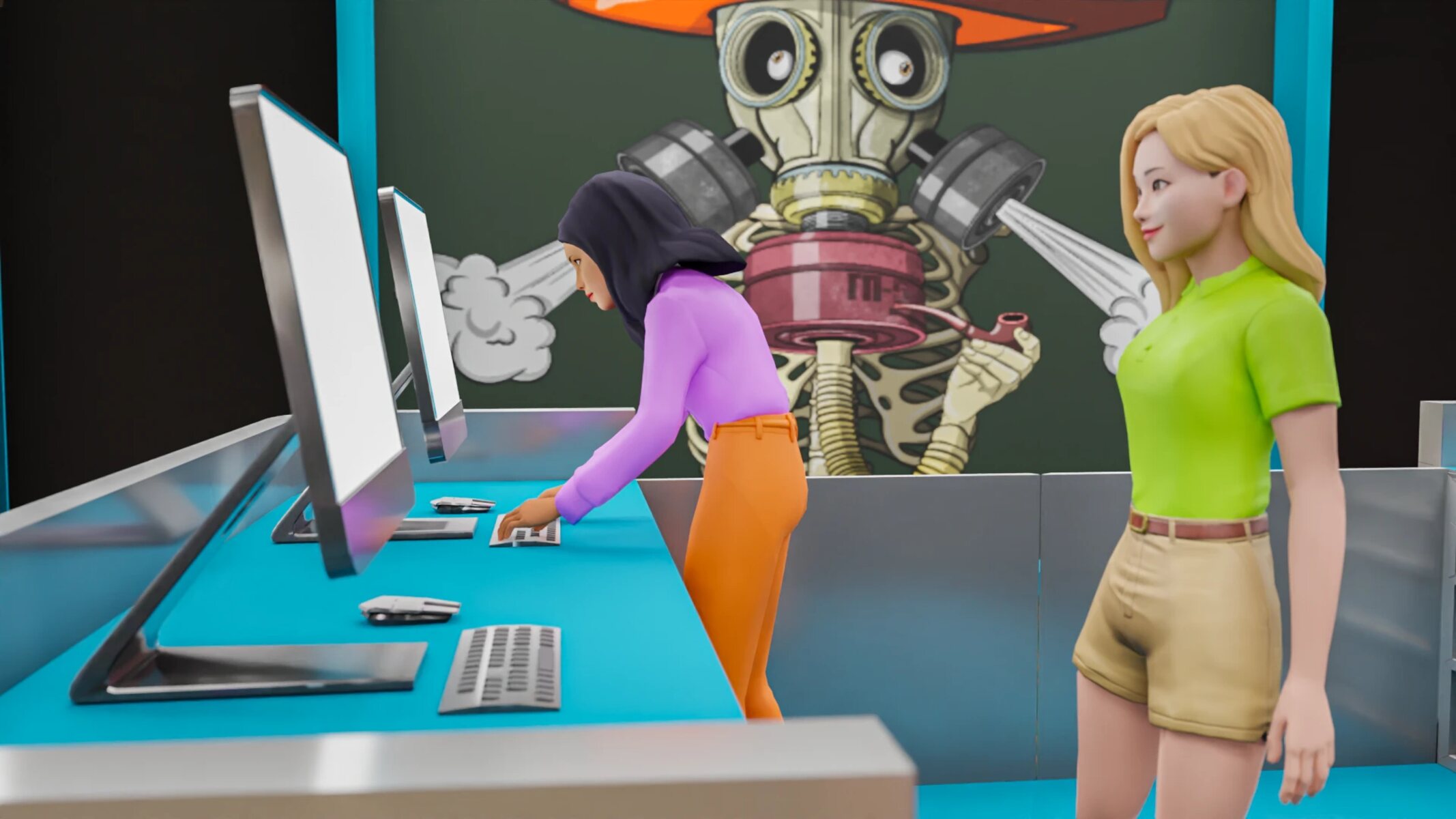What is an NFT?
In recent years, Non-Fungible Tokens, or NFTs, have emerged as a groundbreaking innovation in the digital art and collectibles market. Simply put, an NFT is a unique digital asset that represents ownership or proof of authenticity for a specific item, whether it’s a piece of artwork, a video clip, a virtual real estate, or even a tweet.
Unlike cryptocurrencies such as Bitcoin or Ethereum, which are interchangeable and hold the same value, NFTs are indivisible and unique. Each NFT has distinct characteristics and cannot be exchanged on a one-to-one basis like traditional currencies or tokens. This uniqueness is what sets NFTs apart and gives them their value and appeal.
The power of NFTs lies in their ability to provide ownership and provenance of digital assets in a decentralized and secure manner. Built on blockchain technology, NFTs utilize smart contracts to record and verify the authenticity, ownership, and transaction history of each asset. This ensures transparency and integrity, making it nearly impossible to forge or manipulate NFTs.
Additionally, NFTs enable artists, creators, and collectors to monetize and showcase their work in new and exciting ways. Artists can sell their digital artwork directly to buyers without the need for intermediaries, such as galleries or auction houses. Collectors can own and trade unique digital collectibles, creating a thriving marketplace for digital art, virtual assets, and even virtual real estate.
It’s important to note that NFTs have gained significant attention and popularity due to high-profile sales and endorsements from celebrities and renowned artists. These sales often reach extraordinary prices, making headlines and sparking conversations about the future of digital ownership and the value of digital art.
However, it’s crucial to understand that NFTs can also hold value beyond financial gains. They represent a cultural shift, offering new possibilities for creators and collectors to connect, express themselves, and participate in the digital realm. The potential applications of NFTs are vast and extend beyond the art world, with potential uses in gaming, virtual reality, music, and more.
In the next sections, we’ll explore the process of creating your own NFT, the platforms available, and the steps involved in minting, selling, and interacting with your NFTs. So, let’s dive in and discover the exciting world of NFTs!
Understanding the Technology Behind NFTs
To truly grasp the concept of Non-Fungible Tokens (NFTs), it is essential to delve into the technology that powers them. NFTs are built on blockchain technology, which provides a decentralized and transparent platform for recording and verifying the ownership and transaction history of digital assets.
At its core, blockchain is a distributed digital ledger that consists of a chain of blocks, with each block containing a list of transactions. This decentralized nature eliminates the need for a central authority, ensuring transparency and immutability. Ethereum, one of the most popular blockchain platforms, is widely used for creating NFTs due to its smart contract functionality.
Smart contracts are self-executing agreements embedded within the blockchain. They contain predefined rules and conditions that automatically execute the agreed-upon actions when certain criteria are met. In the context of NFTs, smart contracts establish the rules for ownership, transfer, and verification of digital assets.
One of the key aspects that makes NFTs unique is the use of cryptographic tokens. Each NFT has a distinct and verifiable identity, thanks to its cryptographic properties. These tokens ensure that each NFT is distinguishable, indistinguishable from others, and cannot be replicated or forged.
The standard for creating NFTs on the Ethereum blockchain is the ERC-721 protocol. This protocol defines the basic functionalities and standards for NFTs, allowing developers to create and interact with them seamlessly. The ERC-721 standard specifies the methods for minting new tokens, defining ownership and transfer rights, and storing additional metadata for each token.
The metadata associated with an NFT is an essential component that provides additional information about the digital asset, such as the artist’s name, description of the artwork, edition number, and even token-specific traits or attributes. This metadata enhances the overall value and uniqueness of the NFT and can be stored using standards like ERC-721 or IPFS (InterPlanetary File System).
While Ethereum is the most prevalent blockchain platform for NFTs, other blockchains, such as Binance Smart Chain and Flow, are also gaining traction in the NFT space. Each blockchain has its own unique characteristics, such as scalability, transaction fees, and community support, which may influence the choice of platform for creating and trading NFTs.
Understanding the technology behind NFTs is crucial for both creators and collectors. It allows creators to leverage blockchain technology to secure and monetize their digital assets, while collectors can have confidence in the authenticity and scarcity of the NFTs they acquire. As the NFT market continues to evolve, staying informed about the underlying technology will be key to navigating this exciting and rapidly growing space.
Step 1: Select Your NFT Platform
When it comes to creating and selling your own NFT, the first step is to select the right NFT platform. NFT platforms act as marketplaces where you can mint, list, and sell your digital assets as NFTs. There are several factors to consider when choosing an NFT platform, including fees, user base, features, and community support.
One of the most popular NFT platforms is OpenSea. Known as the largest decentralized marketplace for NFTs, OpenSea offers a wide range of categories for artists and collectors to showcase and trade their digital assets. The platform supports various file types, including images, videos, and even interactive content, making it suitable for different forms of digital art.
Another well-known NFT platform is Rarible. What sets Rarible apart is its focus on community governance. The platform allows creators and users to participate in decision-making processes, which can influence future platform updates and policies. Rarible also has a unique feature where users can easily create and distribute their own custom NFTs.
For those interested in the gaming industry, platforms like Axie Infinity and NBA Top Shot provide specific ecosystems for trading and collecting game-related NFTs. Axie Infinity, for example, is a blockchain-based game that allows players to collect, breed, and battle fantasy creatures called Axies. NBA Top Shot, on the other hand, offers basketball fans the opportunity to collect officially licensed NBA video highlights as NFTs.
It’s important to consider the fees associated with each NFT platform. Minting fees, gas fees (transaction fees on the blockchain), and platform fees can vary depending on the platform you choose. These fees can impact your overall profitability, so it’s essential to do your research and compare the fees of different platforms before making a decision.
User base and community support are also crucial factors. A platform with a large and active user base increases the visibility and potential reach of your NFTs. Additionally, a supportive and engaged community can provide valuable feedback, networking opportunities, and even collaborations.
Before settling on a specific NFT platform, take the time to explore and research different platforms. Look for user reviews, check the platform’s reputation, and see if it aligns with your goals and objectives as a creator or collector. It’s worth noting that new NFT platforms are emerging regularly, so staying updated on the latest trends and developments in the NFT space is essential.
Once you’ve selected your preferred NFT platform, you’re ready to move on to the next step: preparing your digital artwork or content. It’s time to unleash your creativity and turn your creation into a unique and valuable NFT!
Step 2: Prepare Your Digital Artwork or Content
After selecting your desired NFT platform, the next step in creating your own NFT is to prepare your digital artwork or content. This step is crucial as it lays the foundation for the uniqueness and value of your NFT.
Start by creating or selecting the digital artwork or content that you want to transform into an NFT. This can be a piece of visual art, a music track, a video clip, a GIF, or any form of digital media that holds artistic or collectible value. Ensure that your artwork or content is original and adheres to any copyright laws or intellectual property regulations.
Keep in mind that the quality and aesthetics of your digital artwork or content can significantly impact its marketability. Consider investing time and effort into creating high-resolution images or well-produced audiovisual content that captures the attention of potential buyers or collectors.
Once you have your digital artwork or content ready, you may need to format it according to the requirements of your chosen NFT platform. Read the platform’s guidelines and recommendations for file formats, dimensions, and size restrictions to ensure your artwork or content meets their specifications.
If you are not a digital artist or creator, but still want to participate in the NFT space, you have options too. Some platforms allow you to collaborate with artists or purchase existing digital artworks to mint them as your NFTs. This can be a great way to support artists and acquire unique digital assets without having to create them yourself.
Adding additional elements to your NFT can enhance its value and appeal. Consider including metadata such as the title, description, edition number, and any additional information that adds context or backstory to your artwork or content. This information can help potential buyers or collectors understand and connect with your NFT on a deeper level.
Before minting your NFT, take the time to carefully review and proofread your digital artwork or content and its accompanying metadata. Ensure that everything is in order and accurately represents your desired vision for your NFT.
Now that you have prepared your digital artwork or content, you are ready to move on to the next step: minting your NFT. This process will involve creating a unique digital record of ownership for your artwork or content on the blockchain. So, let’s proceed and turn your masterpiece into a one-of-a-kind NFT!
Step 3: Minting Your NFT
Once you have prepared your digital artwork or content, the next step in creating your own NFT is to mint it on the chosen NFT platform. Minting an NFT is the process of turning your digital asset into a unique and indivisible token on the blockchain, establishing its authenticity and ownership.
To begin the minting process, you will need to navigate to the minting or create section of your selected NFT platform. This is where you will upload your digital artwork or content and provide the necessary information to mint your NFT.
Follow the platform’s prompts to upload your digital file. Make sure to select the appropriate file format and check that it meets the platform’s file size requirements. This step ensures that your artwork or content is securely stored and tied to the unique token representing your NFT.
After uploading your digital file, you will be prompted to input additional details for your NFT. This often includes providing a title, description, and any relevant tags or categories that accurately reflect the nature of your artwork or content. These details play a crucial role in attracting potential buyers or collectors and providing them with important information about your NFT.
Some NFT platforms offer the option to customize your NFT further. This can include setting the maximum number of editions for your artwork, defining royalty fees or royalties to the artist for future sales, or even attaching unlockable content or perks for buyers of your NFT.
Once you have provided all the necessary information and customized your NFT as desired, you will proceed to confirm and execute the minting transaction. At this stage, you will typically be required to pay gas fees, which are transaction fees on the blockchain. Gas fees can vary depending on network congestion and platform requirements.
During the minting process, a smart contract associated with the NFT will be created and deployed on the blockchain. This contract contains all the relevant information about your NFT, including ownership details, metadata, and transaction history, ensuring its immutability and traceability.
After the minting transaction is successfully executed and confirmed, your NFT will be officially minted and assigned a unique identifier on the blockchain. Congratulations – you have created your very own NFT!
It’s important to note that minting an NFT does not guarantee immediate sales or success. NFTs thrive in a vibrant and active marketplace, so it’s essential to actively promote and market your NFT across various channels, such as social media, artist communities, and NFT-centric platforms.
Now that your NFT is minted, it’s time to move on to the next step: setting the NFT details and metadata. This step allows you to provide further information and enhance the overall value of your NFT, so let’s continue our journey in the NFT world!
Step 4: Setting the NFT Details and Metadata
After minting your NFT, the next crucial step is to set the details and metadata for your NFT. This step ensures that potential buyers or collectors have a comprehensive understanding of your NFT and its unique characteristics.
Most NFT platforms provide an interface where you can input specific details about your NFT. Start by setting a compelling title that accurately represents your artwork or content. The title should be concise and captivating, grabbing the attention of potential buyers or collectors.
Next, provide a detailed description of your NFT. Explain the inspiration behind your artwork or content, the techniques used, or any relevant details that give insight into the creation process. Writing a compelling description can help potential buyers or collectors connect with your NFT on a deeper level.
Adding tags or categories is another important aspect of setting the details for your NFT. Tags and categories help categorize your NFT and make it easier for interested buyers or collectors to discover it. Think of relevant keywords that describe the theme, style, or subject matter of your artwork or content.
It’s essential to consider the overall visual presentation of your NFT. On most platforms, you will have the opportunity to showcase your NFT with a high-resolution image or preview. This image serves as a representation of your NFT, so ensure that it accurately reflects the quality and aesthetic appeal of your artwork or content.
Metadata plays a crucial role in providing additional context and information about your NFT. This can include the artist’s name, year of creation, edition number (if applicable), and any other relevant details. Metadata helps establish the authenticity and provenance of your NFT, giving potential buyers or collectors a comprehensive view of its background and history.
Consider including details about the significance or rarity of your NFT. For example, if your NFT is part of a limited edition series or has unique traits or attributes, make sure to highlight these features in the metadata. These distinctions can enhance the perceived value of your NFT and make it more desirable to collectors.
Some platforms also offer the option to attach unlockable content or perks to your NFT. This can include additional digital files, exclusive access to future updates or events, or any other digital assets that add value to your NFT. Adding unlockable content can incentivize potential buyers or collectors and create a sense of exclusivity around your NFT.
Once you have set the details and metadata for your NFT, take the time to review and double-check everything for accuracy and completeness. Ensure that all the information provided aligns with the artwork or content and accurately represents your vision for your NFT.
With the details and metadata set, your NFT is now ready to be listed and sold. In the next step, we will explore the process of listing and selling your NFT, so let’s continue our journey in the world of NFTs!
Step 5: Paying Gas Fees
One important aspect to consider when creating and selling your NFT is paying gas fees. Gas fees are transaction fees on the blockchain, and they are necessary for executing actions like minting your NFT, listing it for sale, or transferring it to another wallet. Gas fees can vary depending on the blockchain network and the current level of network congestion.
When paying gas fees, it’s important to understand that these costs can fluctuate based on various factors. Network congestion and the complexity of the transaction can impact the gas fees you need to pay. During periods of high demand or network congestion, gas fees tend to increase, while they may be lower during quieter times.
To pay gas fees, you will need to have an appropriate amount of cryptocurrency in the wallet from which you’re initiating the transaction. The most common cryptocurrency for paying gas fees is Ether (ETH) since many NFT platforms are built on the Ethereum blockchain. However, some platforms may accept other cryptocurrencies for gas fees, so it’s essential to check the specific requirements of your chosen platform.
Before proceeding with any transaction, it’s advisable to research and stay informed about the current gas fees within the blockchain network. This information can help you estimate the potential costs associated with creating and selling your NFT. Additionally, there are online tools and platforms that provide real-time gas fee estimates to assist you in planning your transactions.
It’s important to consider gas fees as part of your overall financial strategy when minting and selling NFTs. Depending on the value of your NFT and the profitability of the sale, it’s crucial to assess whether the expected returns outweigh the costs of gas fees. This evaluation can help you make informed decisions and manage your expenses effectively.
Keep in mind that gas fees are an inherent part of blockchain technology and help prioritize and secure transactions within the network. While they may seem like an additional cost, paying gas fees ensures the smooth operation and integrity of the blockchain ecosystem.
Lastly, it’s worth staying updated on developments within the blockchain space. Certain network upgrades or scaling solutions may be implemented to address gas fee concerns and improve user experience. Being aware of these advancements can provide insights into potential cost-saving opportunities or alternative solutions.
Now that you understand the significance of gas fees in the NFT ecosystem, you are ready to move on to the next step: listing and selling your NFT. In the following section, we will explore the process of listing your NFT for sale and interacting with potential buyers, so let’s continue our NFT journey!
Step 6: Listing and Selling Your NFT
Now that you have minted your NFT and paid the necessary gas fees, it’s time to list and sell your NFT. This step involves showcasing your NFT on the chosen NFT platform and attracting potential buyers or collectors who are interested in acquiring your unique digital asset.
Start by navigating to the “List” or “Sell” section of your selected NFT platform. Here, you will find the necessary tools and options to list your NFT for sale. Take the time to familiarize yourself with the platform’s user interface and guidelines to ensure a smooth and successful listing process.
One of the critical aspects of listing your NFT is determining the price at which you want to sell it. Consider factors such as the uniqueness and demand for your NFT, the quality of your digital artwork or content, and the current market trends. Evaluate similar NFTs to get an idea of the fair market value and set a competitive price that reflects the value of your creation.
While some NFT platforms allow you to set a fixed price for your NFT, others may offer the option to list your NFT for auction. Auctions can create a sense of excitement and competition among potential buyers, potentially driving up the final sale price. Choose the listing method that aligns with your preferences and goals as a creator or collector.
When listing your NFT, be sure to include accurate and detailed information about your artwork or content. If there are any unique attributes, features, or unlockable content associated with your NFT, highlight them in the listing. Clear and compelling descriptions can captivate potential buyers and make your NFT more appealing.
Additionally, consider utilizing social media and other marketing channels to promote your NFT listing. Share information about your NFT, its creation process, and its unique qualities across platforms like Twitter, Instagram, Discord, or dedicated artist communities. Engage with potential buyers, answer their questions, and actively participate in discussions surrounding your NFT.
When a buyer shows interest in purchasing your NFT, the platform will facilitate the transaction. Ensure that your NFT platform provides a secure and seamless process for transferring ownership and delivering the digital asset. Once the transaction is complete, the ownership of the NFT is transferred to the buyer, and you will receive the agreed-upon payment in your wallet.
After selling your NFT, it’s important to maintain good communication with the buyer. Provide any necessary documentation or proofs of authenticity to ensure a smooth ownership transition. This transparency builds trust and can lead to valuable connections and opportunities within the NFT community.
Remember, the NFT market is dynamic and evolving. It’s essential to stay updated on trends, market demands, and new opportunities that arise. Continuously assess and evaluate your strategies to adapt to the ever-changing landscape and make the most of your NFT creations.
With your NFT successfully listed and sold, it’s time to explore the final steps of interacting with your NFT community and storing and showcasing your NFT collection. So, let’s move on to the next step and dive deeper into the exciting world of NFTs!
Step 7: Interacting with Your NFT Community
Interacting with your NFT community is an essential step in building a strong presence and establishing connections within the NFT ecosystem. Engaging with your audience and fellow artists or collectors can lead to valuable collaborations, networking opportunities, and a loyal following for your NFT creations.
Start by actively participating in NFT communities, forums, and social media platforms dedicated to digital art and collectibles. Joining these communities allows you to connect with like-minded individuals who share your passion for NFTs. Engage in discussions, share insights, and contribute to the community to establish your presence and gain visibility.
Engage with your buyers and collectors by maintaining open lines of communication. Respond to inquiries promptly and provide any necessary support or assistance. Building strong relationships with your buyers can lead to repeat purchases and word-of-mouth recommendations, enhancing your reputation within the NFT community.
Collaboration is a powerful way to expand your reach and tap into new audiences. Consider partnering with other artists or creators to co-create NFT collections or launch joint projects. Collaborations not only introduce your work to a broader audience but can also bring fresh perspectives and ideas to your artistic journey.
Hosting events, such as virtual art shows or live streams, can foster engagement and interaction with your NFT community. These events enable you to showcase your latest creations, provide behind-the-scenes insights, and even offer exclusive perks to attendees. Engaging directly with your community through live events strengthens the connection between you and your audience.
Engage with your community through social media platforms dedicated to NFTs. Share updates, unveil new artwork or content, and celebrate milestones or achievements. Utilize relevant hashtags, tag other artists or collectors, and actively interact with comments and direct messages. By being an active participant in the NFT social media landscape, you can increase your visibility and attract new followers.
Consider contributing to the NFT space by sharing educational content or tutorials. Your expertise and insights can benefit newcomers to the NFT community and establish you as a trusted resource. Providing value through educational content not only positions you as an authority but also contributes to the growth and development of the broader NFT ecosystem.
Networking within the NFT community is crucial for fostering collaborations and professional growth. Attend virtual conferences, webinars, and NFT-focused events to connect with industry experts, artists, collectors, and platform representatives. Actively participate in panels, workshops, or discussions to share your knowledge and expand your network.
Remember to stay engaged and up-to-date with the latest trends, innovations, and developments in the NFT space. The NFT landscape is constantly evolving, and staying informed will help you adapt your strategies and discover new opportunities for creativity and success.
By actively interacting with your NFT community, you can create a vibrant and supportive network that fosters growth and collaboration. Embrace the power of community as you continue to explore the limitless possibilities of the NFT world.
Step 8: Storing and Showcasing Your NFT Collection
Once you have created and sold your NFTs, it’s important to properly store and showcase your NFT collection. Storing your NFTs securely ensures their long-term preservation, while showcasing them effectively helps attract potential buyers and enhance your reputation as a creator or collector.
The first step in storing your NFT collection is to choose a reliable digital wallet. Many NFT platforms provide built-in wallets, but you may also consider using a separate wallet for added security and flexibility. Look for wallets that are compatible with the blockchain on which your NFTs are minted. Ensure that the wallet you choose supports the specific standards and protocols associated with your NFTs.
When storing your NFTs, it’s essential to keep your private keys and credentials safe. Back up your wallet’s data and store it in secure locations, such as offline devices or hardware wallets. Regularly update your wallet software to protect against security vulnerabilities and stay current with the latest security practices.
Consider diversifying the storage of your NFTs by using multiple wallets or platforms. This helps mitigate the risk of losing access to your entire collection in the event of a wallet or platform compromise. Distributing your NFTs across different storage solutions enhances the overall security of your collection.
To showcase your NFT collection effectively, take advantage of NFT-specific platforms that provide dedicated galleries or profiles. These platforms allow you to display your NFTs in an organized and visually appealing manner. Customize your profile, create collections, and provide descriptions or stories for each NFT to engage potential buyers and collectors.
Social media platforms can also be valuable tools for showcasing your NFTs. Regularly share updates of your NFT collection across platforms like Twitter, Instagram, or dedicated artist communities. Include high-quality visuals and compelling descriptions to capture the attention of your audience and drive engagement.
Consider creating a personal website or portfolio to showcase your NFTs and provide additional information about your artistic journey. Your website can serve as a centralized hub for your NFT collection, providing a professional and curated presentation of your work. Include details about each NFT, including the story behind its creation, its inspiration, and any unique features it may possess.
Participating in virtual art shows or online exhibitions is another effective way to showcase your NFT collection. These events provide opportunities to reach wider audiences and connect with other artists and collectors. Engage with attendees, share insights about your NFTs, and seize networking opportunities during these events.
Collaborate with other artists or creators to curate joint exhibitions or collections. Co-curating shows can expand the reach of your NFTs and create a cohesive narrative or theme. Collaborations not only amplify your visibility but also provide opportunities to learn from others, cross-pollinate audiences, and engage in creative dialogue.
Lastly, consistently update your showcasing platforms with new NFT releases or acquisitions. Regularly refresh your profile, website, or social media channels to showcase the latest additions to your collection. Stay active in the NFT community and engage with others to foster connections and build a loyal following.
By effectively storing and showcasing your NFT collection, you can preserve your digital assets while maximizing their exposure and impact. Embrace the opportunity to captivate audiences and connect with fellow artists and collectors through the beautiful and exciting world of NFTs.
Conclusion
Congratulations! You have now journeyed through the process of creating, minting, listing, and selling your own NFT. By following the steps outlined in this guide, you have gained the knowledge and understanding to navigate the world of NFTs with confidence.
NFTs have revolutionized the way we think about digital ownership, providing a new avenue for artists, creators, and collectors to express themselves and participate in a thriving marketplace. Understanding the technology behind NFTs, selecting the right NFT platform, and preparing and minting your digital artwork or content are crucial steps in successfully entering the NFT space.
Engaging with your NFT community, paying attention to gas fees, and effectively storing and showcasing your NFT collection further enhance your presence and success in the NFT ecosystem. Building relationships, actively participating in NFT communities and platforms, and staying informed about trends and developments will contribute to your growth as an NFT artist or collector.
Remember that the NFT market is dynamic and ever-evolving. It’s important to adapt your strategies, remain flexible, and continuously explore new opportunities. Embrace creativity, collaboration, and community engagement to truly harness the potential of NFTs.
As you embark on your NFT journey, always prioritize authenticity, originality, and ethical practices. Respect intellectual property rights, adhere to copyright laws, and contribute positively to the NFT community. By doing so, you will not only thrive as an NFT creator or collector but also contribute to the sustainable growth and development of the NFT ecosystem.
So, it’s time to unleash your creativity, embrace the power of NFTs, and make your mark in the exciting and transformative world of digital art and collectibles. Happy creating and collecting!







